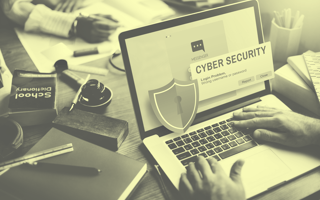As 2020 forces enterprises to evolve, more and more companies are deciding to implement full or hybrid remote-work environments for their employees.
With such a transition, there are several key considerations that can dictate whether an enterprise can sustain long-term success, from consistent employee training to the integration of a digital workspace to employee wellness prioritization and much more. But in parallel with these integral pillars of operational efficiency, one thing is essential: a robust cybersecurity infrastructure that can protect IP and sensitive data from cybercriminals and other wrongdoers.
In our digital age, cybersecurity investment is an absolute necessity. Data is more at risk than ever before as employees disperse across the entire globe, utilizing a wide range of connected yet decentralized IoT devices (both professional and personal) and various Wi-Fi and cellular networks to access company servers.
While most companies understand the importance of establishing secure networks through VPNs and other gates of access to sensitive company data, there remains a large point of vulnerability across all industries that needs to be addressed: user error.
Understanding the Risks
Security reports have shown that enterprise mobile phishing attacks have spiked during the COVID-19 pandemic, climbing 37 percent between the last quarter of 2019 and the first quarter of 2020. While cybersecurity concerns were immediate across all industries that were able to shift to a mostly remote workforce after the pandemic hit, emphasis had been put on network infrastructure and data protection instead of manual user error.
These incidences are not specific to one industry, as stories of phishing attacks are spreading throughout all enterprises, with the same report showcasing healthcare, manufacturing, banking and government organizations as some of the most-targeted sectors in these recent attacks.
Some enterprises may feel that such an attack cannot happen to them, but it’s important for them to understand that cybercriminals have a window of opportunity they are already maximizing. If a company has not yet been attacked and has not put into place the necessary cybersecurity infrastructure to protect themselves, they remain extremely vulnerable. And those vulnerabilities will likely be exposed.
So how can enterprises look to safeguard against user error-driven cyber threats? The key is education.
Institute a Learning Management System
Most enterprises have some sort of training software that they either build in-house or outsource to inform their employees of the latest tips and tricks to protect themselves against cybercriminals. Cybersecurity training is commonplace and often required for employment; but is a one-time, hour-long training video and quiz enough to make a permanent impact?
As employees move to full-remote work environments, the risks are higher, and the measures taken to protect company data should scale up in parallel. A learning management system (LMS) is a great way to foster an environment of constant learning among an employee base. It can keep them engaged as learners, updating not only their expertise in their field but also their knowledge of different warning signs to look out for to protect against phishing attacks.
As online platforms continue to evolve — with the rise and fall of social media, digital collaboration tools and other forms of media that employees consume daily — more and more points of entry for cyberattacks emerge on a regular basis. Through constant employee engagement on an LMS, an enterprise can ensure that employees stay up to date on the latest vulnerabilities, understand how to identify various red flags across multiple platforms and know the appropriate steps to take to inform their employer and address the concern.
Organizations need to invest time, effort and budgets to give their employees a greater degree of sophistication managing their home networks too. That could mean greater education about how to detect and prevent intrusions into home Wi-Fi networks. With the dissolution of the security perimeter and increased use of IoT devices with different degrees of their security capabilities, attack surfaces will continuously expand and stay dynamic.
In this hybrid work-from-home scenario, there is an enormous need to strengthen home networks through education and greater ecosystem partnerships.
Gamification With a Purpose
It can often be difficult to incentivize employees to seek out learning opportunities within an organization, especially those that involve complex nuances. This is where an LMS will truly shine.
If the enterprise implements an LMS that includes an aspect of “tokenization” or gamification, employees will not only reap the benefits of learning more about the latest phishing trends and how to protect themselves, they will feel a sense of reward from completing each competency. By attaching a value or “score” to each competency, you’ll incentivize employees to actively seek out training opportunities — especially if such scores are tied to some sort of reward for participation.
Upon implementing an internal LMS, companies should regularly update competency content with new levels of cybersecurity awareness trainings. If the organization provides a reward for completing an entire cluster of competencies in a specific field (in this case: phishing and cybersecurity awareness), employees will be much more likely to proactively seek out and engage with these resources. In turn, more employees will be well-informed and ready to thwart cybercriminals’ inevitable attacks.
Seeing the Bigger Picture
Cybersecurity is a constantly changing practice. Ever-evolving layers are required to build an infrastructure that can support long-term enterprise success. It is, of course, crucial to have the back-end IT foundation in place to support remote work, as employees will undoubtedly continue to remain decentralized for the near and far future.
That said, it’s also important for businesses to understand all the various ways in which cybercriminals operate, because even one vulnerability within a cybersecurity strategy is enough to compromise an entire enterprise network. It’s absolutely crucial for employees to understand their own role in protecting company data in this age of remote work.
Those that choose to invest in long-term company-wide education on the topic will be best protected. But those that choose to ignore this need will likely fall victim to devastating cyberattacks.





